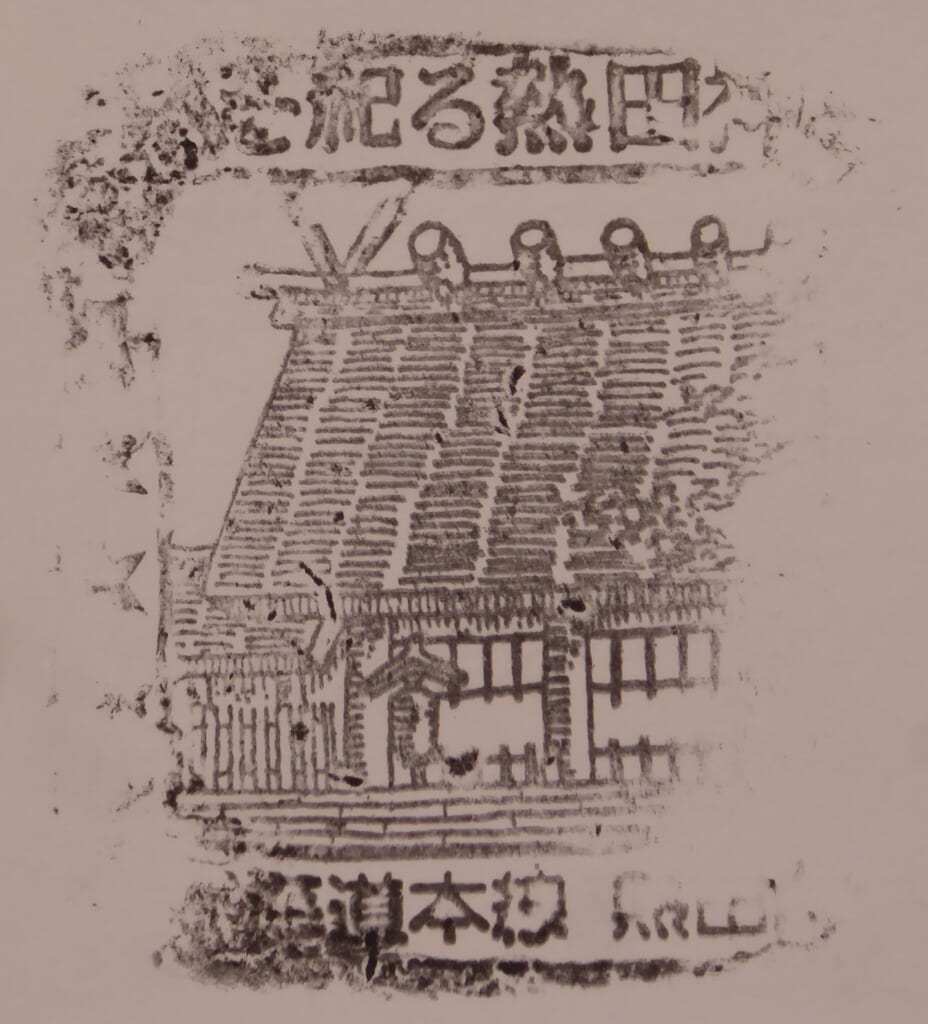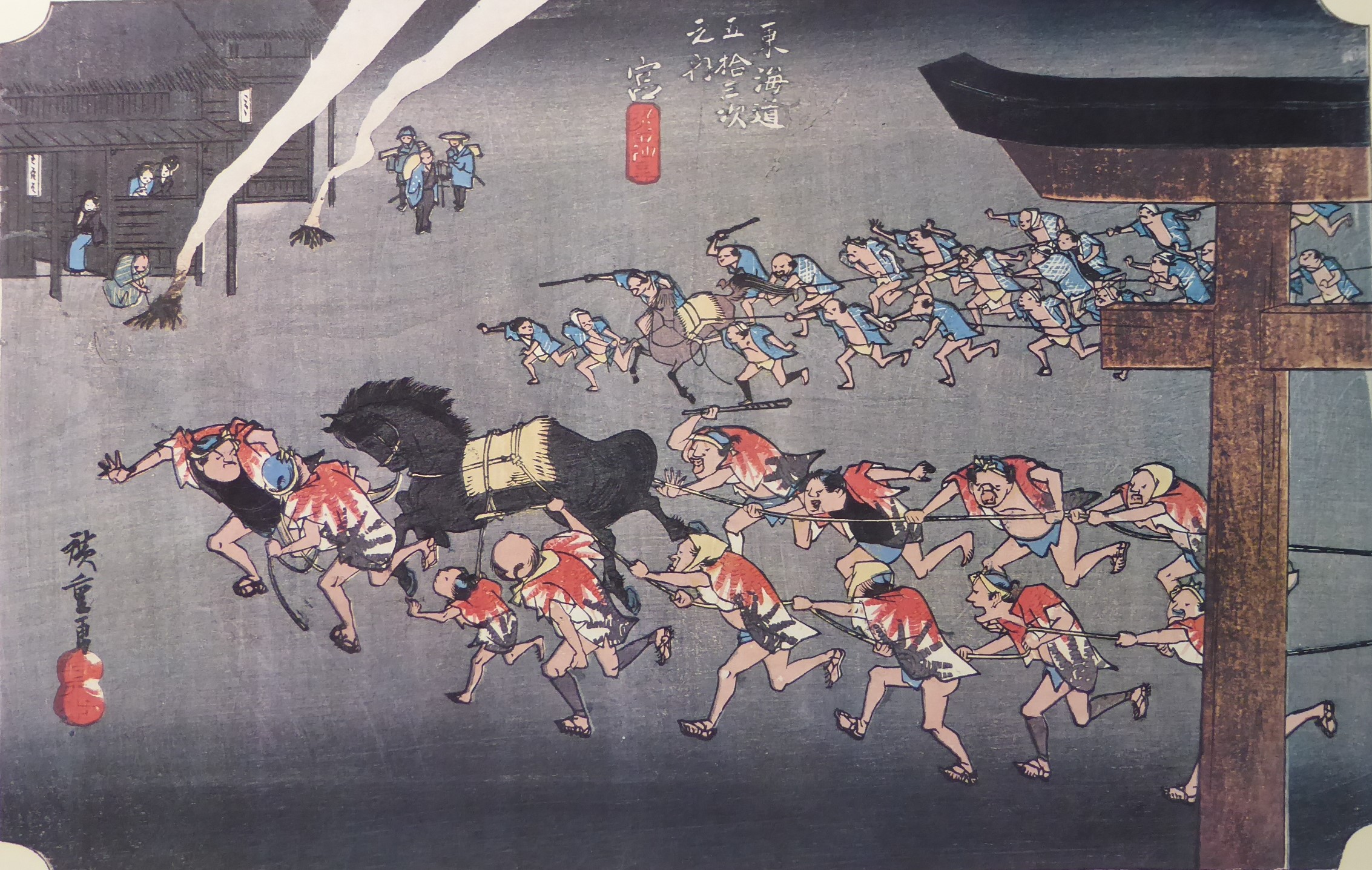Explanation of the Fifty-three Stations of the Tokaido 42 Miya
27.5km from Kuwana to Miya, 35°07’13″N 136°54’25″E
Miya is the 41st post station on the Fifty-three Stations of the Tokaido.
It is the junction of the Mino and Saya roads, which lead to Tarui on the Nakasendo.
It is generally called Miya no Yado.
In official documents from the shogunate and Owari Domain, it is written as Atsuta-juku.
It is now in Atsuta Ward, Nagoya City, Aichi Prefecture.
It is the largest post station on the Tokaido, and in 1843 there were two honjin, one wakihonjin, 248 inns, 2924 houses, and a population of 10,342.
It is a temple town of Atsuta Shrine and a port town.
By the Owari Domain, it was under the jurisdiction of the town magistrate, along with Nagoya Castle and Gifu.
Atsuta Shrine is a shrine located in Jingu, Atsuta Ward, Nagoya City, Aichi Prefecture.
It has been affectionately called “Atsuta-san” since ancient times.
Long ago, it was located on a cape jutting out into Ise Bay.
The surrounding area has been reclaimed, and there is no trace of it now.
More than 2 million worshippers visit the shrine every year for the first shrine visit of the year.
It is known as the shrine that enshrines the Kusanagi Sword, one of the Three Sacred Treasures.
Even after its enshrinement, the Kusanagi Sword suffered many hardships, including being stolen and its katashiro being lost during the Battle of Dannoura.
The building is built in the same Shinmei-zukuri style as Ise Shrine, and until 1893 it was built in a unique architectural style called Owari-zukuri.
① “Hoeido version”
It is said that the place name Miya comes from the fact that it is a temple town of Atsuta Shrine.
A religious ceremony called Uma-no-to was held here every year on May 5th.
The Uma no To is a religious ceremony in which horses are offered from nearby villages.
This depicts cantering horses taking part in the Ise Jingu Umaoi Festival.
It is said that gods descend upon the horses in this festival.
Two of these horses are made to gallop, and their speed is used to predict the year’s good harvest.
This boldly depicts a heroic festival held amidst bonfires.
However, there are no records of the Ise Jingu Umaoi Festival at the shrine.
The scene depicts bare horses wrapped in rough straw mats and people running alongside them as they make a horse offering.
The scene shows a race between the blue team wearing indigo-dyed hanten coats in the background and the red team wearing red Arimatsu-shibori hanten coats in the foreground.
To emphasize the sense of speed at which the horses and riders pass by, only the left side of the torii gate is included in the picture.
②”Gyousyo version”
This is a composition that pairs with Kuwana-juku.
As with Kuwana-juku, many shared boats are depicted.
The torii gate of Atsutahama is drawn on the left.
This was a bustling place as the ferry crossing of Shichiri. A shared boat could go from here to Kuwana-juku for 45 mon.
Currently, there is a railway, so there are no shared boats.
③ “Reisho version”
The whole beach is drawn from above.
The five sailing ships at the top are drawn in an inverted triangle to express the vastness of the sea.
④ “Hokusai version”
The two sailing ships at the top are drawn boldly.
What is strange is that there are no people on these two ships.
I think they may have unloaded their cargo and are anchored.
⑤ “Travel image”
The image is blurry, but it is JR Atsuta Station.
⑥ “Stamp image”
This is a stamp from JR Atsuta Station.
Hoeido version
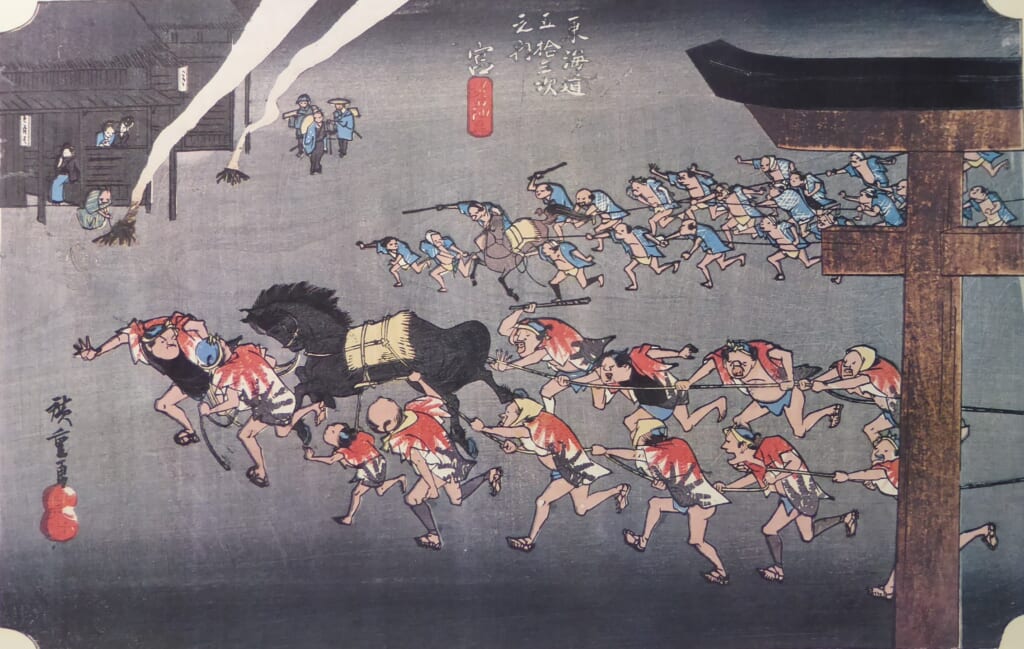
Gyousyo version
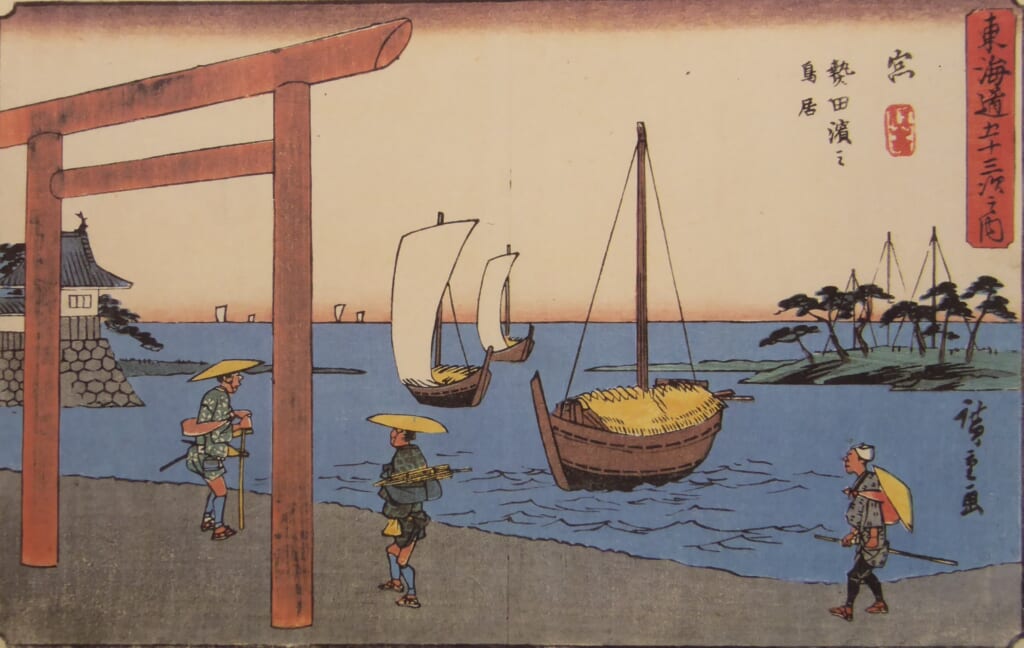
Reisho version
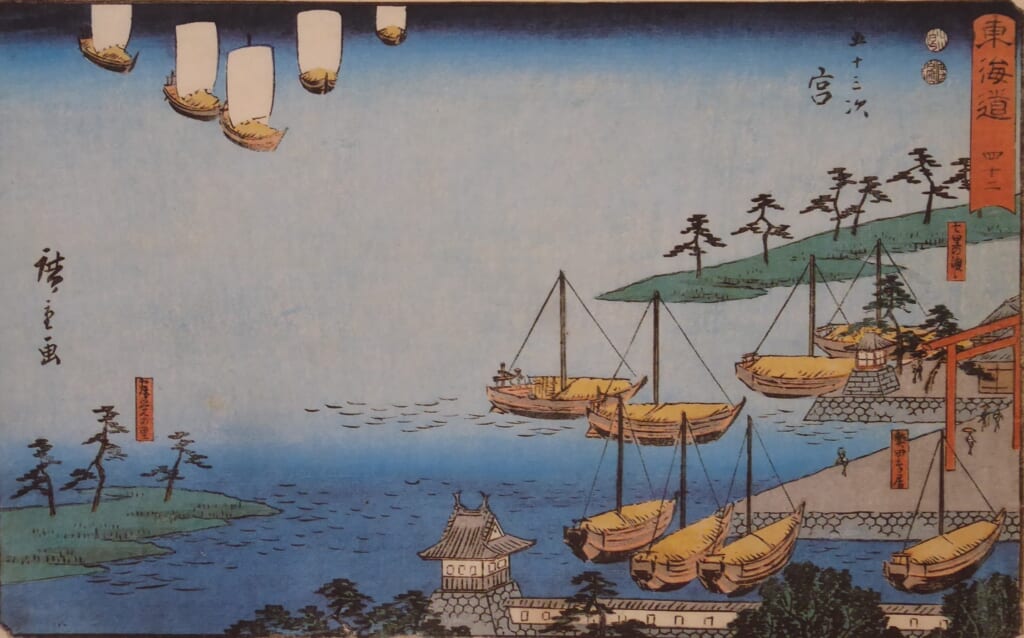
Hokusai version
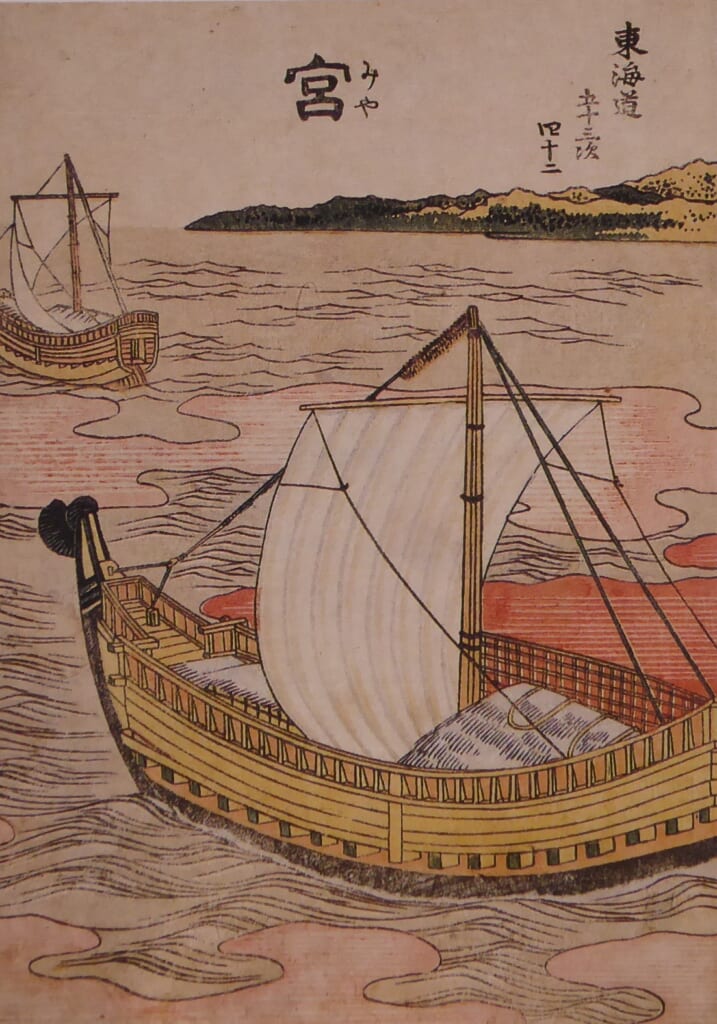
Travel image

Stamp image
